The problem with a cheesecake comparison is that so much of what makes a cheesecake perfect, especially a New York cheesecake, is its texture, and the texture depends so much on the baking technique, and the baking technique will vary depending on the pan size. So the only really fair comparison would be to make three full cheesecakes and use a thermometer to test doneness. But three cheesecakes makes for a ridiculous amount of cheesecake. Plus my instant-read thermometer was on vacation when I made two of these. I did my best.
I baked the first cheesecake for a family holiday. Then I drove with it for four hours to my parents’ house, served half of it, drove back four hours with the remainder and stuck it in the freezer. I baked the other two a month later in a 5-inch springform pan. I overbaked one and underbaked the other. This is not my most comprehensive comparison post, I admit.
Still, I think we were able to draw some conclusions. Not that the opinions of my four tasters were aligned; that would be too easy. (Full disclosure: This comparison was actually done months ago, after cocktails. My notes have the cakes labeled as “brown”, “pale”, and “mess”; apparently one cake didn’t slice well.)
Mess, aka Cooks Illustrated’s New York Cheesecake: After the abuse of eight hours in the car, being half-eaten, frozen, and defrosted, is it any wonder it didn’t slice cleanly? Regardless, it was without question my favorite, as well as Dave’s. The texture ranges from solid and dry on the edge to soft and luscious in the center. The flavor is balanced between the cream cheese and the sweetness and the flavorings. In my opinion, this is cheesecake perfection.
Pale, aka Dorie Greenspan’s Tall and Creamy Cheesecake: I undercooked this one; still, this is one good cheesecake. While I liked Cooks Illustrated’s NY Cheesecake better, I almost feel like it’s an unfair comparison because they’re not meant to be similar cheesecakes. Dorie’s cheesecake is soft and melty with a good balance of sweet and tangy (if you use sour cream instead of the also suggested heavy cream). It isn’t the same style as a New York cheesecake, and there’s nothing wrong with that. It was my sister’s favorite. (My sister started this whole complicated comparison in the first place, by reminding me that cheesecake is one of her favorite foods and then visiting shortly afterwards.)
Brown, aka (Goumet via) Smitten Kitchen’s New York Cheesecake: I’m not a big enough person to take all of the responsibility for overcooking this one. Deb admits that the cooking times are risky – 500 degrees until the top begins to brown, then a far lower temperature. I don’t need to tell you that it didn’t work for me; you can see that overbrowned, blown-out top for yourself. Besides that, most of us felt that the citrus flavor was overbearing, even with the reduced amounts of zest that Deb recommends. With all of the stars aligned and with less zest, this might be a great cheesecake. But with other stars around, why bother with the struggle?
Overall, a flawed comparison, but I learned my preferences. For New York cheesecake, Cooks Illustrated. For non-New York cheesecake, Dorie Greenspan. But always, I just want cheesecake.
One year ago: 100% Whole Wheat Sandwich Bread
Two years ago: Lemon Pancakes with Blueberry Syrup
Printer Friendly Recipe
New York Cheesecake (from Cooks Illustrated)
For the crust:
5 tablespoons unsalted butter, melted, plus 1 additional tablespoon, melted, for greasing the pan
4 ounces (approximately 8 whole) graham crackers, broken into rough pieces and processed into fine, even crumbs
1 tablespoon sugar
For the cheesecake:
2½ pounds (5 8-ounce packages) cream cheese, room temperature
⅛ teaspoon salt
1½ (10.5 ounces) cups sugar
⅓ cup sour cream
2 teaspoons freshly squeezed lemon juice
2 teaspoons vanilla extract
2 large egg yolks plus 6 large eggs, at room temperature
1. To make the crust, adjust an oven rack to the lower-middle position and heat the oven to 325 degrees F. Brush the bottom and sides of a 9-inch springform pan with ½ tablespoon of the melted butter. In a medium bowl combine the graham cracker crumbs, 5 tablespoons melted butter, and sugar. Toss with a fork until the crumbs are evenly moistened. Transfer the crumbs to the springform pan and use the bottom of a ramekin to firmly press the crumbs evenly into the pan bottom. Bake until fragrant and beginning to brown around the edges, about 13 minutes. Cool on a wire rack while preparing the filling.
2. Increase the oven temperature to 500 degrees F. In the bowl of a stand mixer fitted with the paddle attachment, beat the cream cheese at medium-low speed to break up and soften it slightly, about 1 minute. Scrape the beater and the bottom and sides of the bowl well with a rubber spatula; add the salt and about half of the sugar and beat at medium-low speed until combined, about 1 minute. Scrape the bowl; beat in the remaining sugar until combined, about 1 minute. Scrape the bowl; add the sour cream, lemon juice, and vanilla. Beat at low speed until combined, about 1 minute. Scrape the bowl; add the egg yolks and beat at medium-low speed until thoroughly combined, about 1 minute. Scrape the bowl; add the remaining eggs 2 at a time, beating until thoroughly combined, about 1 minute, scraping the bowl between additions.
3. Brush the sides of the springform pan with the remaining ½ tablespoon melted butter. Set the pan on a rimmed baking sheet to catch any spills in case the pan leaks. Pour the filling into the cooled crust and bake 10 minutes; without opening the oven door, reduce the oven temperature to 200 degrees and continue to bake until the cheesecake reads about 150 degrees on an instant-read thermometer inserted in the center, about 1½ hours. Transfer the cake to a wire rack and cool until barely warm, 2½ to 3 hours. Run a paring knife between the cake and the springform pan sides. Wrap tightly in plastic wrap and refrigerate until cold, at least 3 hours.
4. To unmold the cheesecake, removed the sides of the pan. Slide a thin metal spatula between the crust and the bottom of the pan to loosen, then slide the cake onto a serving plate. Let the cheesecake stand at room temperature about 30 minutes, then cut into wedges and serve. (Use a long, thin, sharp knife that has been run under hot water and then dried for slicing. Wipe the blade clean and rewarm between slices.)
Printer Friendly Recipe
Tall and Creamy Cheesecake (from Dorie Greenspan’s Baking: From my Home to Yours)
I prefer using sour cream instead of heavy cream.
Makes 16 servings
For the crust:
1¾ cups graham cracker crumbs
3 tablespoons sugar
pinch of salt
½ stick (4 tablespoons) unsalted butter, melted
For the cheesecake:
2 pounds (four 8-ounce boxes) cream cheese, at room temperature
1⅓ cups (9.67 ounces) sugar
½ teaspoon salt
2 teaspoons pure vanilla extract
4 large eggs, at room temperature
1⅓ cups sour cream or heavy cream, or a combination of the two
To make the crust:
Butter a 9-inch springform pan—choose one that has sides that are 2 ¾ inches high (if the sides are lower, you will have cheesecake batter leftover) — and wrap the bottom of the pan in a double layer of aluminum foil; put the pan on a baking sheet.
Stir the crumbs, sugar and salt together in a medium bowl. Pour over the melted butter and stir until all of the dry ingredients are uniformly moist. (I do this with my fingers.) Turn the ingredients into the buttered springform pan and use your fingers to pat an even layer of crumbs along the bottom of the pan and about halfway up the sides. Don’t worry if the sides are not perfectly even or if the crumbs reach above or below the midway mark on the sides—this doesn’t have to be a precision job. Put the pan in the freezer while you preheat the oven.
Center a rack in the oven, preheat the oven to 350°F and place the springform on a baking sheet. Bake for 10 minutes. Set the crust aside to cool on a rack while you make the cheesecake.
Reduce the oven temperature to 325°F.
To make the cheesecake:
Put a kettle of water on to boil.
Working in a stand mixer, preferably fitted with a paddle attachment, or with a hand mixer in a large bowl, beat the cream cheese at medium speed until it is soft and lives up to the creamy part of its name, about 4 minutes. With the mixer running, add the sugar and salt and continue to beat another 4 minutes or so, until the cream cheese is light. Beat in the vanilla. Add the eggs one by one, beating for a full minute after each addition—you want a well-aerated batter. Reduce the mixer speed to low and stir in the sour cream and/or heavy cream.
Put the foil-wrapped springform pan in the roaster pan.
Give the batter a few stirs with a rubber spatula, just to make sure that nothing has been left unmixed at the bottom of the bowl, and scrape the batter into the springform pan. The batter will reach the brim of the pan. (If you have a pan with lower sides and have leftover batter, you can bake the batter in a buttered ramekin or small soufflé mold.) Put the roasting pan in the oven and pour enough boiling water into the roaster to come halfway up the sides of the springform pan.
Bake the cheesecake for 1 hour and 30 minutes, at which point the top will be browned (and perhaps cracked) and may have risen just a little above the rim of the pan. Turn off the oven’s heat and prop the oven door open with a wooden spoon. Allow the cheesecake to luxuriate in its water bath for another hour.
After 1 hour, carefully pull the setup out of the oven, lift the springform pan out of the roaster—be careful, there may be some hot water in the aluminum foil—remove the foil. Let the cheesecake come to room temperature on a cooling rack.
When the cake is cool, cover the top lightly and chill the cake for at least 4 hours, although overnight would be better.
Serving:
Remove the sides of the springform pan— I use a hairdryer to do this (use the dryer to warm the sides of the pan and ever so slightly melt the edges of the cake)—and set the cake, still on the pan’s base, on a serving platter. The easiest way to cut cheesecake is to use a long, thin knife that has been run under hot water and lightly wiped. Keep warming the knife as you cut slices of the cake.
Storing:
Wrapped well, the cake will keep for up to 1 week in the refrigerator or for up to 2 months in the freezer. It’s best to defrost the still-wrapped cheesecake overnight in the refrigerator.
Printer Friendly Recipe
New York Cheesecake (adapted from Gourmet via Smitten Kitchen)
Crust:
8 ounces (15 4¾-by-2½-inch sheets) graham crackers
8 tablespoons (1 stick) unsalted butter, melted
½ cup (3.5 ounces) sugar
¼ teaspoon salt
Filling:
5 (8-ounce) packages cream cheese, softened
1¾ cups (12.25 ounces) sugar
3 tablespoons all-purpose flour
1 teaspoon finely grated lemon zest
1 teaspoon finely grated orange zest
5 large eggs
2 large egg yolks
½ teaspoon vanilla
1. For the crust: Stir together crust ingredients and press onto bottom and up the sides, stopping one inch shy of the top rim, of a buttered 9-inch (or 24 cm) springform pan. Put the crust in the freezer while you prepare the filling.
2. Filling: Preheat oven to 550 degrees. Beat together cream cheese, sugar, flour and zest with an electric mixer until smooth. Add vanilla, then eggs and yolks, one at a time, beating on low speed until each ingredient is incorporated. Scrape bowl down between additions.
3. Put the springform pan with the crust in a shallow baking pan (to catch drips). Pour the filling into the crust (the springform pan will be completely full) and bake in baking pan in the middle of the oven for 12 minutes or until puffed. Please watch your cake because some ovens will top-brown very quickly and if yours does too fast, turn the oven down as soon as you catch it. Reduce the temperature to 200 degrees and continue baking until the cake is mostly firm (center will still be slightly wobbly when pan is gently shaken), about one hour more.
4. Run a knife around the top edge of the cake to loosen it and cool the cake completely in the springform pan on a rack, then chill it, loosely covered, for at least 6 hours.

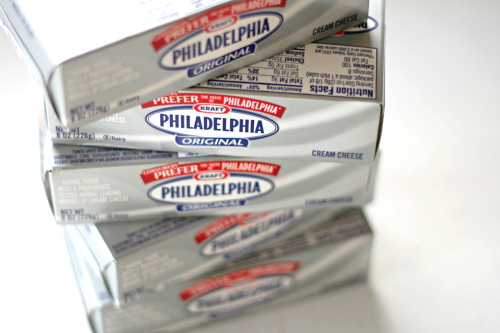
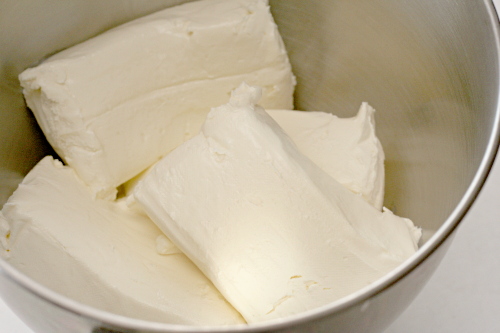
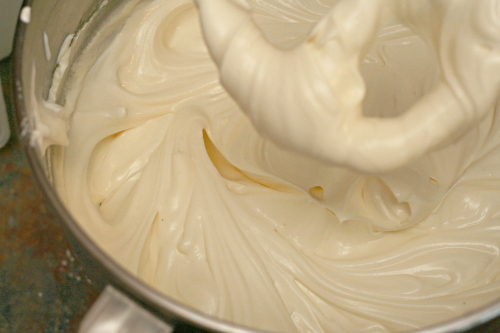
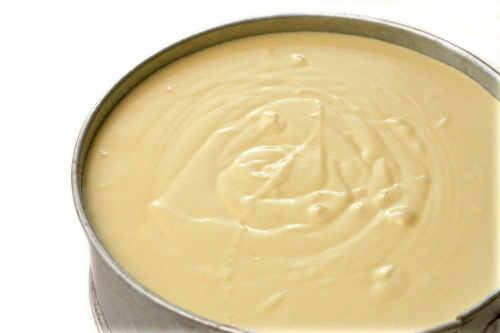

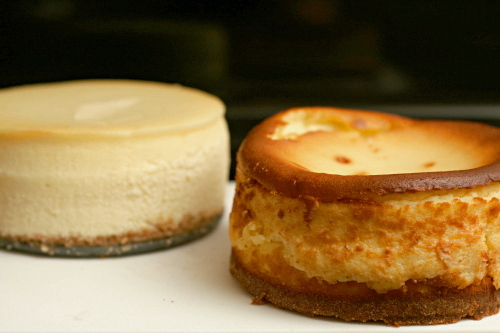
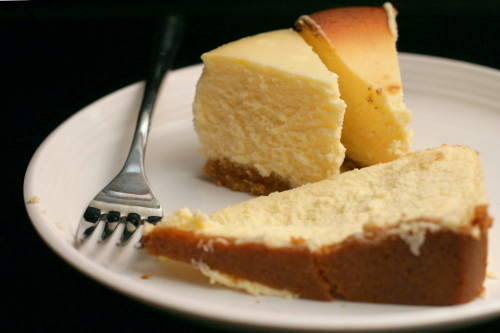
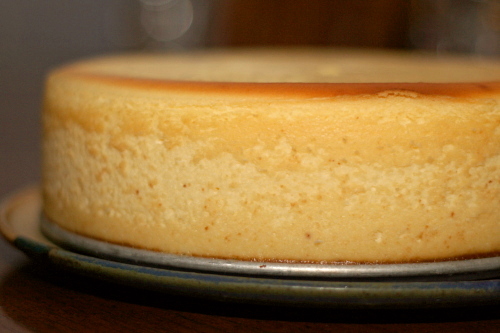






This comparison comes at a perfect time for me. I’ve been searching for a great cheesecake recipe to make. I’ve narrowed it down to the Cooks Illustrated or Martha Stewart recipe. I think I’ll try the CI one…
My goodness! A cheesecake comparison is quite a feat. I’ve only made a couple cheesecakes in my life and cannot imagine making three in the span of a month or so. I’ve bookmarked the same cheesecake recipe on smitten kitchen but given your difficulty with the recipe I think I’ll definitely try out the Cooks Illustrated version instead! Thanks!
If I remember right, the two cheesecakes without lemon were very similar. The differences were pretty subtle. Excellent cheesecakes!
For me, I’ve never even tried the others because Cook’s Illustrated’s NY cheesecake is so very perfect. And for me, there has never been a cheesecake that sliced as cleanly, so I’m assuming the other factors in your situation caused those issues. Oh God, now I need some.
They look fantastic! I have loved cheesecake since I was a child:)
I love Dorie’s recipe so much that I don’t think I could ever stray away from it. I don’t like using sour cream in it though because of the sour, tangy taste and texture. My girlfriend and I prefer the heavy cream. I guess it is a personal choice. You could also use half heavy cream and half sour cream.
P.S. I was so happy to see a new comparison from you! Thank you.
Oh, man, my mother will love you. She is a huge, HUGE cheesecake fanatic; I inherited my cheesecake preferences from her – dense, “heavy on the cheese”, almost creamy, mousse-like cheesecake is the best thing ever. But my favourite is always cheesecake PIE, because I’m a huuge crust fan. 😀
Finally!!! A GREAT cheesecake recipe. Thanks.
As a cheesecake lover I feel like I should know this, but I don’t…what is supposed to be the difference between a NY cheesecake and a regular one???
As always, love love love the comparison posts. I would also like to apply for membership to your board of taste-testers. ;p
Even though you say it’s not the best comparison because some were over- or under-baked, I think that’s actually valid criteria because it demonstrates the ease of preparation (not that I’m one to talk about the easy way, but still). Though I’m not a big cheesecake fan, your photos make me hungry anyway!
Thank you for this post. I love comparison posts and cheesecake too!
I could gain twenty pounds doing a cheese cake comparison. My verdict? I love them all. 🙂
this post came at a perfect time for me! I am planning on making Dorie’s cheesecake today for my husband’s birthday and was wondering if it’s good. I personally cannot stand cheesecake, it is probably the only sweet I really don’t like, but my husband LOVES it! Good to have a comparison to look at so I don’t have to taste them myself!
Hi Bridget- I LOVE your blog, and this cheesecake comparison is fantastic! Your photos are gorgeous, but I was wondering if you would clarify which cheesecakes are which recipe? Especially the photo with the two mini cheesecakes side by side- which one is CI’s? Thanks so much!
Kim – Sorry about that; I thought it might be evident from the descriptions in the text. The full-size cheesecake (and all of the batter and prep pictures) is CI’s recipe. The small cheesecake with the dark rim is from Smitten Kitchen’s blog, and the other small cheesecake, the one that has no browning on the top, is Dorie Greenspan’s recipe.
fantastic!! i am now inspired to make my own comparison post! now to get small springform pans 😉
Yayy another comparison post!! Thanks so much, I think I’m going to make Dorie’s recipe next 🙂
You’re an animal. This is exactly what I’ve been planning on doing because of the abundance of acclaimed STELLAR recipes (Cook’s Illustrated & Smitten Kitchen’s being two of them) – but your preliminary tests make me THRILLED for the CI NY version, so I’m starting there first. Secretly hoping it will be my first & last. Can’t wait to check out the rest of your blog, thanks!!!
You forgot to mention something important…in Culinary school ..we learn the proteins in the emulsion of cheescake and the eggs need to be cook slowly so the cheescake doesnt brake..meaning overbakes or brownw…it is important to bake any custard filling in a bain Marie…meaning in a warm water bath..to do this place a rack below the cheescake fill with a third way up with cold water..maintain a warm watee temperature by adding ice if necessary..this will prevent the cake from over baking…and akso i find it helpful to cover the cake with aluminum half way through the baking time so the cake doesnt brown on top..make sure u wait til its fully. Form on top otherwise. It will stick to the aluminum and youth top will be un even.